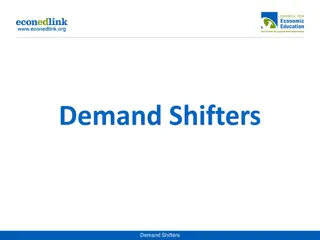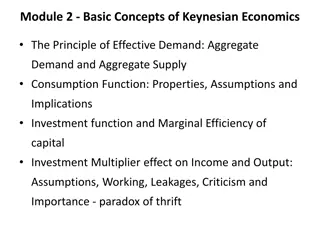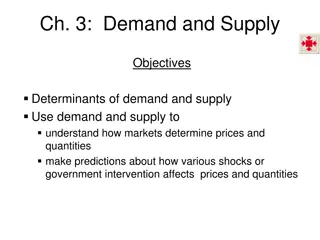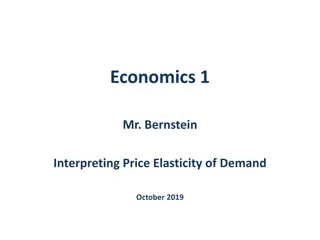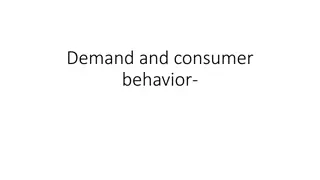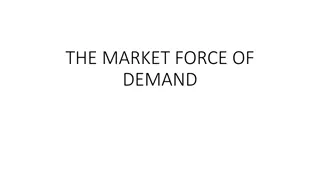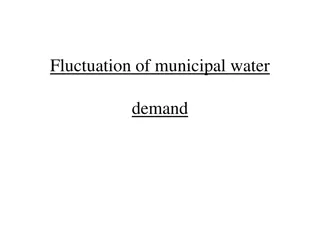Understanding Demand in Economics
Demand in economics refers to the quantity of a commodity that consumers wish to purchase at a given price level. It is the desire backed by purchasing power, distinguishing it from mere desire or wish. Factors influencing demand include the price of the commodity, prices of related goods (substitutes and complements), and the income of consumers. The relationship between these factors and demand varies based on the type of goods involved. Understanding these dynamics is crucial for businesses and policymakers in predicting market behavior and making informed decisions.
Download Presentation

Please find below an Image/Link to download the presentation.
The content on the website is provided AS IS for your information and personal use only. It may not be sold, licensed, or shared on other websites without obtaining consent from the author. Download presentation by click this link. If you encounter any issues during the download, it is possible that the publisher has removed the file from their server.
E N D
Presentation Transcript
Demand Demand is a quantity of a commodity which a consumer wishes to purchase at a given level of price and during In other words, demand for a commodity refers to the desire to buy a commodity backed with sufficient purchasing power and the willingness to spend. Desire is just a wish for a commodity and a person can desire a commodity even if he does not have the capacity to buy it from the market whereas demand is desire backed by purchasing power that is to say whatever an individual is willing to buy from the market in a given period of time at a given price. A poor person can desire to own a car but that will not become a demand because he does not have the purchasing power to buy a car from the market. a specified period of time.
Factors affecting demand: (a) Price of the commodity: Inverse relationship exists between price of the commodity and It means with the rise in price of the commodity the demand of that commodity falls and vice-versa. (b) Price of related goods: It may be of two types: 1.Substitute goods 2.Complementary goods demand of that commodity.
Factors affecting demand: (i) Substitute Goods: Substitute goods are those goods which can be used in place of another goods and give the same satisfaction to a consumer. There would always exist a direct relationship between the price of substitute goods and demand It means with an increase in price of substitute goods,the demand for given commodity also rises and vice-versa. For example, Pepsi and Coke. for given commodity.
Factors affecting demand: (ii) Complementary Goods: Complementary goods are those which are useless in the absence of another goods and which are demanded jointly. There would always exist an inverse relationship between price of complementary goods and demand It means,with a rise in price of complementary goods,the demand for given commodity falls and vice-versa.For example pen and refill. for given commodity.
Factors affecting demand: (c) Income of a Consumer: There are three types of goods: 1.For Normal Commodity: For normal commodity, with a rise in income, the demand of the commodity also rises and vice-versa. Shortly, direct relationship exists between income of a consumer and demand of normalcommodity. 2.For Inferior Goods: For inferior goods, with a rise in income, the demand of the commodity falls Shortly,inverse relationship exists between income of a consumer and demand of inferior goods. 3.For Necessity Goods: For necessity goods, whether income increases or decreases,quantity demanded remains constant. and vice-versa.
Factors affecting demand: (d) Taste and Preferences of the Consumer: Tastes, preferences and habits of a consumer also influence its demand for a commodity. For example,if Blackand White TV set goes out of fashion,its demand will fall. Similarly, a student may demand more of books and pens than utensils of his Miscellaneous: Some of the other factors affecting the demand of a consumer are: Change in weather, change in number of family members,expected change in future price,etc. preferences and taste.

 undefined
undefined




